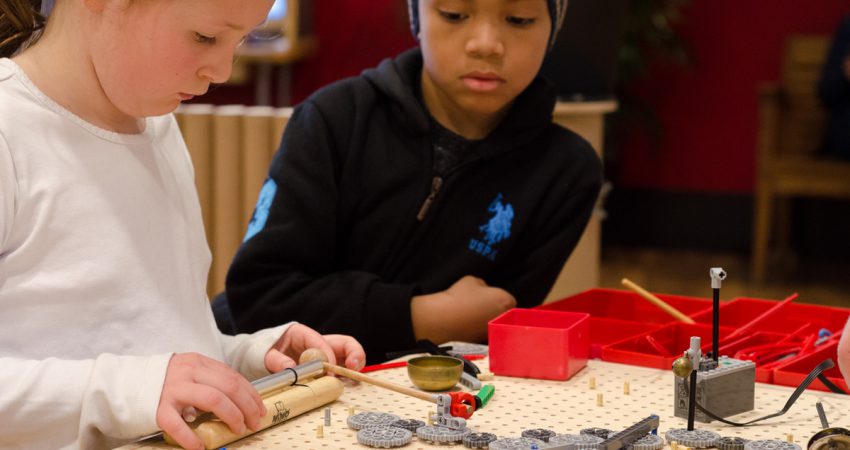
By Heather King - September 2014
PAPER CITATION
Byrne, J., Ideland, M., Malmberg, C., & Grace, M. (2014). Climate change and everyday life: Repertoires children use to negotiate a socio-scientific issue. International Journal of Science Education, 36(9), 1491–1509.
In this study, Byrne, Ideland, Malmberg, and Grace examined the interpretive repertoires of children engaged in discussions about socioscientific issues in their classrooms. The study focused on the ways in which groups of 9–10-year-old children, in both the U.K. and Sweden, engaged in discussions about reducing levels of carbon dioxide and the effects of proposed solutions.
Theoretical Basis
This study analyzes the interpretive repertoire used by children to frame content and the ways in which they talk. Potter and Wetherall (1987) defined interpretive repertoires as the structures individuals use to create versions of reality that enable them to frame and legitimize opinions and actions. These repertoires are used not only to frame arguments but also to construct a certain kind of self.
The analysis of the children’s discussion also draws on the work of scholars in the field of argumentation and on analyses of the use of language as a means of thinking together in group situations (Mercer, 2000). Byrne and colleagues focused on how the particular topic and the group dynamic invited or prohibited certain identities and interpretive repertoires.
Research Design
The students were given a series of suggestions that a government might consider for reducing carbon dioxide production. The suggestions were ones to which the children themselves could relate, for example, enforcing a reduction in car use, limiting air travel for family holidays, and prohibiting the consumption of fruit not grown in the home country.
The children, working in groups of four to six, were audio-recorded as they engaged in discussions for between 30 and 60 minutes. The transcripts of their discussions were analysed for the use of particular repertoires and how the repertoires were used to legitimise opinions and maintain existing social patterns.
Findings
The children’s repertoires were categorised as follows:
- Everyday life: referring to everyday habits and activities
- Science and technology: using science reasoning and references
- Society: referring to social structures and authorities
- Justice: talking about issues of fairness
- Environment: showing concern for doing the right thing for the planet
- Self-interest: referring to self-oriented concerns such as convenience
In most instances, the children used the repertoires of everyday life to frame and justify their views. When their views were in conflict, however, the students were more likely to employ the repertoires of self-interest and justice. In attempting to resolve their arguments, the students shifted their use of repertoires to those of society and science and technology. In their discussions, some repertoires — for example, environment — were clearly non-negotiable and thus were not challenged. Perhaps these repertoires had superior status in the children’s minds. Meanwhile, health — a sub-repertoire intertwined with everyday life, society, and science and technology — appeared to be subordinate to other repertoires.
Byrne and colleagues posit that the range of repertoires used during the discussions may have raised the children’s awareness of the complexity of the issue.
Significantly, the researchers found that the children did not structure their arguments along the lines typical of school discourse: They did not try to find a single, correct answer, nor did they try to please the teacher or researchers. Rather, the analyses suggest that the children saw themselves as responsible citizens and “produced (rather than reproduced) knowledge by suggesting a new idea at a political and societal level” (p. 1504).
Implications for Practice
The introduction of socioscientific issues into the curriculum will not automatically facilitate deep thinking about such issues. However, as this paper demonstrates, if young people are provided with a structure for discussion, they are more than able to engage with the issues, negotiate conflict, and propose solutions. In short, they are able to enact and develop their citizenship skills.
Furthermore, the excerpts of talk reported in the article suggest that discussion of a socioscientific issue offered the young people an opportunity to connect knowledge from a variety of contexts: home, school, and so on. In this way, such discussion — whether initiated in or out of school — may help to bridge young peoples’ learning experiences across contexts.
Finally, the students observed in this study did not express any of the ecological cynicism or “‘environmental depression” (Zeyer & Roth, 2013) commonly found when teenage learners discuss environmental issues. This finding suggests that it may be even more important to support citizenship skills in young children, since they are more positive than older students and indeed may be more receptive to engagement and subsequent action.
References
Mercer, N. (2000). Words and minds: How we use language to think together. London, UK: Routledge.
Potter, J., & Wetherall, M. (1987). Discourse and social psychology. London, UK: Sage.
Zeyer, A., & Roth, W.-M. (2013). Post-ecological discourse in the making. Public Understanding of Science, 22(1), 33 – 48.




